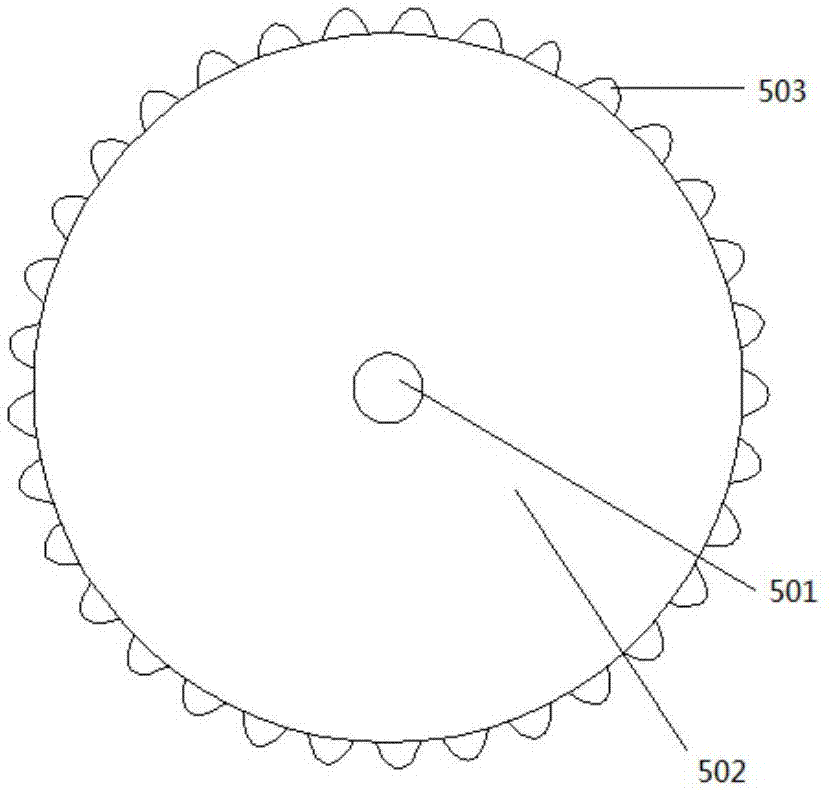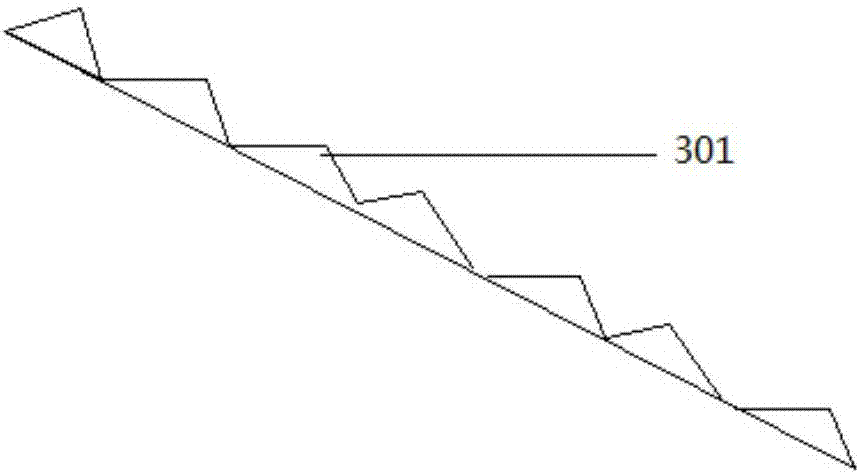Disposable degradable paper cup and preparation method thereof
A disposable, paper cup technology, applied in the field of paper cups, can solve the problems of easy occurrence of mildew and insufficient degradation of starch-based paper cups, and achieve the effects of improving flexibility, being easily degraded, and improving stability.
- Summary
- Abstract
- Description
- Claims
- Application Information
AI Technical Summary
Problems solved by technology
Method used
Image
Examples
Embodiment 1
[0039] A disposable degradable paper cup, including a degradable paper cup body and an inner film coated on the inner surface of the degradable paper cup:
[0040] The degradable paper cup body includes the following raw materials in parts by weight: 50 parts of tapioca starch, 20 parts of sisal fiber, 10 parts of flax fiber, 15 parts of alginic acid fiber, 20 parts of peach gum, 6 parts of trehalose, pullulan 4 parts, polyvinyl alcohol 10 parts, methylcellulose 6 parts, carrot 2 parts, onion 2 parts, cabbage 2 parts, licorice 2 parts, dark plum 1 part, orange peel 1 part, gardenia 1 part and magnolia bark 1 part ;
[0041] The inner membrane comprises the following raw materials in parts by weight: 30 parts of polyhydroxyalkanoate, 4 parts of lotus leaf powder, 3 parts of locust bean gum, 3 parts of protamine and 1 part of mustard powder.
[0042] Wherein, the polyhydroxyalkanoate is made by mixing polyhydroxybutyrate, polyhydroxyvalerate, and a copolymer formed by hydroxybu...
Embodiment 2
[0056] A disposable degradable paper cup, including a degradable paper cup body and an inner film coated on the inner surface of the degradable paper cup:
[0057] The degradable paper cup body includes the following raw materials in parts by weight: 70 parts of tapioca starch, 25 parts of sisal fiber, 20 parts of flax fiber, 25 parts of alginic acid fiber, 30 parts of peach gum, 10 parts of trehalose, pullulan 6 parts, 20 parts of polyvinyl alcohol, 8 parts of methylcellulose, 4 parts of carrot, 4 parts of onion, 4 parts of cabbage, 4 parts of licorice, 3 parts of dark plum, 3 parts of orange peel, 3 parts of gardenia and 3 parts of magnolia bark ;
[0058] The inner membrane comprises the following raw materials in parts by weight: 40 parts of polyhydroxyalkanoate, 6 parts of lotus leaf powder, 5 parts of locust bean gum, 5 parts of protamine and 2 parts of mustard powder.
[0059] Wherein, the polyhydroxyalkanoate is made by mixing polyhydroxybutyrate, polyhydroxyvalerate,...
Embodiment 3
[0073] A disposable degradable paper cup, including a degradable paper cup body and an inner film coated on the inner surface of the degradable paper cup:
[0074] The degradable paper cup body includes the following raw materials in parts by weight: 60 parts of tapioca starch, 22 parts of sisal fiber, 15 parts of flax fiber, 20 parts of alginic acid fiber, 25 parts of peach gum, 8 parts of trehalose, pullulan 5 parts, polyvinyl alcohol 15 parts, methylcellulose 7 parts, carrot 3 parts, onion 3 parts, cabbage 3 parts, licorice 3 parts, ebony plum 2 parts, orange peel 2 parts, gardenia 2 parts and magnolia bark 2 parts ;
[0075] The inner membrane comprises the following raw materials in parts by weight: 35 parts of polyhydroxyalkanoate, 5 parts of lotus leaf powder, 4 parts of locust bean gum, 4 parts of protamine and 1.5 parts of mustard powder.
[0076] Wherein, the polyhydroxyalkanoate is made by mixing polyhydroxybutyrate, polyhydroxyvalerate, and a copolymer formed by h...
PUM
 Login to View More
Login to View More Abstract
Description
Claims
Application Information
 Login to View More
Login to View More - R&D
- Intellectual Property
- Life Sciences
- Materials
- Tech Scout
- Unparalleled Data Quality
- Higher Quality Content
- 60% Fewer Hallucinations
Browse by: Latest US Patents, China's latest patents, Technical Efficacy Thesaurus, Application Domain, Technology Topic, Popular Technical Reports.
© 2025 PatSnap. All rights reserved.Legal|Privacy policy|Modern Slavery Act Transparency Statement|Sitemap|About US| Contact US: help@patsnap.com



